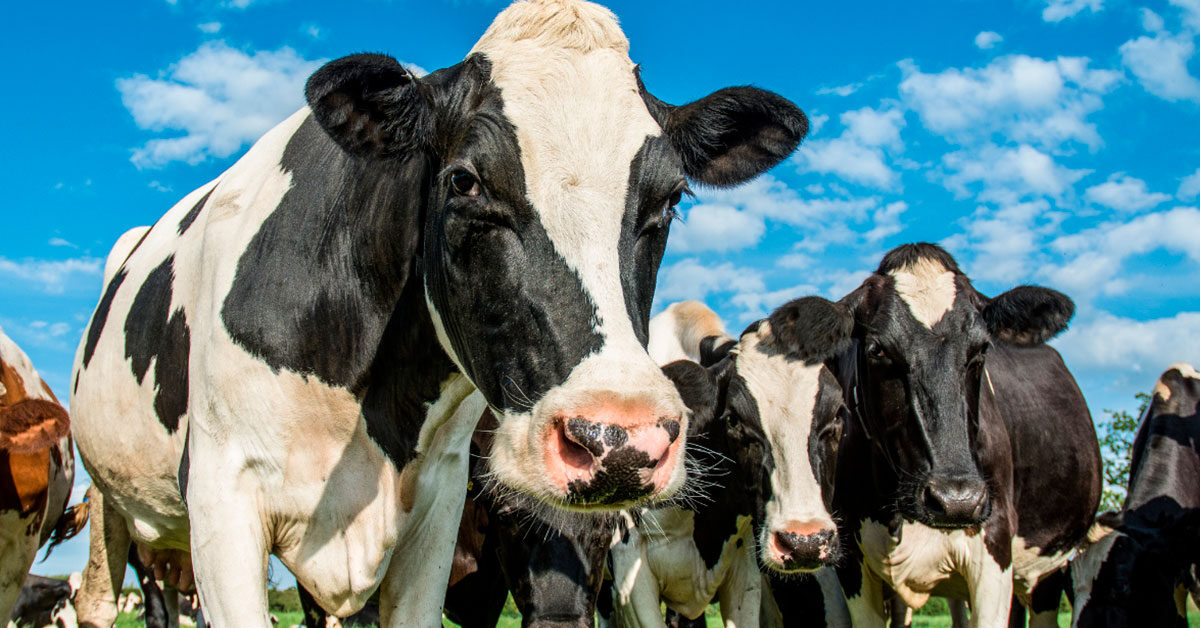

There are three macronutrients in food: carbohydrates, fat and protein, ‘macro’ in the sense that they comprise almost all of the weight and calories of food. Vitamins and minerals are the micronutrients.
Protein, ever since its discovery in 1839, has been considered by many people to be an exceptionally important nutrient, often assuming that the more we consume the better. Its name comes from the Greek word, proteios, meaning ‘of prime importance’—an auspicious and almost mystical beginning for the future of this nutrient! Add to this importance the long standing impression by most people that protein is exclusive to animal source foods.
We now know, however, that this importance is exaggerated, to mythical proportions. For a starter, protein is not exclusive to animal-based foods. In the late 1800s protein was also found to be present in plant foods. Yet the myth of its being tightly or even exclusively linked to animal-based foods still lingers. Simply ask a non-meat eating vegan how many times they are asked, “But where do I get my protein?”
This bias implying that meat is the sole source of protein was encouraged over these many decades by ‘science’. Research findings, for example, were showing that animal-based proteins are utilized by the body more efficiently. This efficiency of utilization referred to increased body growth rate among other effects, with greater efficiency being described as greater ‘biological value’ or higher quality. But it was only animal-based proteins that have high quality.
Because most people obviously like high quality, animal-based protein became the protein of choice. In effect, this history evolved through the prism of linguistics to give a profound self-perpetuating paradigm.
The problem with this proposition is that high quality does not necessarily mean better health. Increasing body growth may be useful for farm animal production and growing children faster, but it also means growing cancer cells faster, improving conditions for heart disease and speeding up aging—each of which has been documented. Growing young girls more rapidly means earlier sexual maturation, higher circulating levels of estrogen and, eventually, elevated breast cancer risk.

My laboratory in a long series of studies conducted over more than two decades showed that the growth of experimental cancer is markedly stimulated by the consumption of animal-based casein, the main protein of cow’s milk. This occurs in part because this animal source protein stimulates the production of the same growth hormone that spurs childhood growth. Plant based proteins tend not to promote these events, not at least when fed at levels typically found in the whole foods, plant based (WFPB) diet. These findings beg the next important question of what is the proper amount and kind of protein for individuals to consume for optimum health.
To answer this question, let’s first consider the officially created recommended daily allowance (RDA). It was first determined and published in 1943 by the prestigious National Academy of Sciences for the purpose of supporting good nutrition for the American military during wartime.
This assessment begins with a determination of the amount of protein to be consumed to compensate for the amount of protein (as nitrogen) excreted. This estimate, called the minimum daily requirement, was about 0.5 gms/kg of body weight, equivalent to about 6% of total diet calories. Because this estimate was determined on a small, random sample of individuals (from the larger population), it was adjusted upward by about two standard deviations to insure adequate intake for everyone in the larger population. This became 0.8 gm/kg body weight—the well known recommended daily allowance (RDA). For a 70 kg (144 lb) adult male, this is 56 gms; for a 60 kg (132 lb) female, 48 gms. Assuming a daily consumption of 2000 calories (cal) and an energy content of 4 cal/gm protein, this corresponds to 11.2 % dietary protein for a 2000 cal diet, or 9.0% dietary protein for a 2500 cal diet. To round it off for convenience, a diet of 10% protein (the RDA) easily represents enough protein for good health. This estimate, first made official in 1943, has since been officially reviewed 14 times by an expert panel of scientists, thus fixing it as a well-established figure.
But because we revere protein in general, especially animal-based protein, an average American diet contains about 17% dietary protein—not the RDA of 10%. The key question then is what kind of diet provides this RDA of 10% protein? A whole food plant based diet easily provides the 10% protein (even the low protein potato has 8% protein) while also including the countless other nutrients required for good health. But 90-95% of us consume substantially more protein than the RDA. Almost all of the protein in excess of this RDA comes from animal-based foods which brings with it two types of adverse health consequences, including 1) the adverse effects of the protein itself and 2) the displacement of the health benefits of the nutrients of plant-based foods.
Our animal protein rich diets result from our unquestioned enthusiasm for protein, especially of the animal kind. As a result, our diets are more flawed than we realize, not because of the over consumption of any one nutrient like animal-sourced protein but because of the under consumption of countless other plant-sourced nutrients.
Here’s a small sample of especially damning evidence on animal-based protein itself, some of which has been available for a very long time. Much of this evidence, selected because of its scientific rigor and its implications, was reported as the effects of single nutrients or groups of nutrients but keep in mind that most of this evidence also will reflect parallel changes in other nutrients that add to these ill effects.
Although preceded by several reports on the association of dietary fat with cancers in the 1960s and 1970s among different countries, a 1986 report1 showed that the almost linear increased cancer rates often observed with high fat diets are primarily attributed to animal-based food (total dietary fat and animal-based protein are highly correlated, that is, >90%).2
A 670-page, 1997 report3, prepared by a group of 16 scientists from 10 countries, reviewing the world’s literature on the diet and cancer relationship concluded, as a first recommendation, to consume a plant-based diet.
Heart disease has long been associated with animal fat consumption4 and serum cholesterol5 although this early focus on these two dietary factors has now expanded to a much more comprehensive analysis. In rural China, for example, an aggregate group of ‘Western’ (affluent) diseases (inclusive of heart disease) are highly correlated with serum cholesterol, which is highly correlated in turn with animal protein.6 Thus the early reports of heart disease being associated with dietary total fat, saturated fat and cholesterol is much more likely to have been as association with animal based protein.
As early as 1922 and 1923, increased animal protein consumption was more effective in increasing the early stages of atherosclerosis than dietary fat.7,8 In 19409 and 194110, the same results again appeared. Casein, an animal-based (milk) protein, was about five times more effective(!) than a plant-based protein (soy) in causing an increase in serum cholesterol in experimental animal studies, as later summarized in 1983.11 Similar results were obtained for another animal-based protein, lactalbumin of cow’s milk,12 when it was compared to two plant based-proteins, corn and wheat.

In human studies in 197713 and 198014, animal-based protein affected serum cholesterol much more substantially than did dietary fat. Animal-based proteins, as a group, increase serum cholesterol while plant-based proteins, as a group, decrease serum cholesterol.15 Also, when animal-based proteins and plant-based proteins are switched, serum cholesterol levels switch accordingly,16, 17 going high with animal-based proteins and going low with plant-based proteins. In short, these and other studies convincingly show that animal-based protein is much more significant than plant-based protein or dietary fat in promoting high serum cholesterol and early atherogenesis. However, this effect that has been largely ignored, even though the first observations of this effect appeared almost a century ago and have been repeated many times since.
A similar phenomenon exists for the effects of animal-based protein consumption on experimental cancer.18, 19 The animal-based protein, casein, has been shown in many studies,20, 21 especially in my own laboratory,22 to increase the development of cancer in experimental animals while plant-based proteins, soy and wheat protein, decrease its development. These extensively published findings, too, have been subsequently ignored even though mechanisms responsible for this effect have been documented.
An expert panel of 13 scientists convened by the U.S. National Academy of Sciences produced a 478-page, 1982 report on diet, nutrition and cancer20 and emphasized “the importance of including fruits, vegetables, and whole grain cereal products in the daily diet”. It also was the first expert panel to recommend that dietary fat be decreased only to 30% of total calories, and not lower as the evidence warranted because the panel believed that it might suggest curtailment of the consumption of animal protein-based foods (meat, milk and eggs) and put the report’s credibility at political risk.
In 2009, a review (meta-analysis) of 10 major cohort studies (433,070 participants) showed a highly significant 26% increase in type-2 diabetes cases with an increase of 120 g red meat/day and a 41% increase in type-2 diabetes cases (380,606 participants) when comparing high to low intake of processed meats.23 This is an unusually large number of participants and a huge effect for studies that did not include for comparison a whole food plant-based study group with no meats and/or other animal-based foods.
In 2012, researchers from the Harvard Nurses’ Health Study summarized findings on red meat consumption and mortality from two big, well-known studies, the Nurses and the Physicians studies (23,926 deaths, including 5901 cardiovascular diseases and 9464 cancers, and almost 3 million years of follow-up). They concluded that “red meat consumption is associated with an increased risk of total, CVD [cardiovascular] and cancer mortality. Substitution of other healthy protein sources for red meat is associated with a lower mortality risk.” They estimated that 9.3% of deaths in men and 7.6% in women…could be prevented…if all individuals consumed <0.5 serving/day of red meat.” In a network of case-control studies, reported in 2013, 11,622 cases of 10 different types of cancer were reported for the years 1991-2009 in Italy and Switzerland. An average 32% cancer risk increase was observed for those consuming an equivalent of 50 g red meat/day.24
These three major degenerative diseases (heart, cancer and diabetes) are associated with increased red meat consumption. The sizes of these effects are statistically quite remarkable, especially when these studies did not include a comparison with the WFPB diet where the observed effect would very likely be much larger, based on the ability of the WFPB diet to reverse the majority of the diabetes and heart disease cases.25, 26
Yet another relatively common disease associated with animal protein-based diets is osteoporosis. Comparing countries, very impressive positive correlations exist for bone fracture rates with dietary calcium27 and animal protein.28 Together these two nutrients explain the increased risk for osteoporosis with increased dairy consumption.22
Very recently, the results of several large studies or meta-analyses of groups of such human studies have become available. Each of these studies has its own unique experimental characteristics, which include 1) number of participants, 2) length of observation period, 3) relative numbers and ages of men versus women, 4) ethnicity, 5) different exposure metrics (food consumption, disappearance, recall and blood biomarkers), 6) disease outcomes (all-cause or disease-specific mortality rates) and 7) criteria for food group specifications (e.g., processed or unprocessed red meat, other meat groups, dairy, eggs). Each report, therefore, will be unique and will provide its own disease risk estimate as a function of these many lifestyle qualifiers (a range of estimations is to be expected). The findings of these studies were peer-reviewed and were authored by highly competent and experienced researchers with little or no hidden conflicts of interests.
Without becoming entrapped in experimental minutiae (as important as they are), the reported findings of a sample of the more notable of these studies show that processed and unprocessed red meat consumption is significantly associated with increases in total mortality by 10-44%,29, 30 31 cardiovascular disease mortality by 18-28%29 and cancer mortality by 10-32%.24, 31 Although these results of increased disease risk for meat consumption are generally statistically significant, they may seem somewhat modest for many observers.
In contrast, intervention studies show that switching from a meat based diet (also rich in refined carbohydrates) to a WFPB diet reverses cardiovascular disease in 90-100% of subjects.26, 32 Similarly, inter-country cross-sectional studies show a similar magnitude of effect for several cancers and cardiovascular disease. That is, cancer rates approach 0-10% in the lowest dietary fat countries, where dietary fat (as total, saturated and polyunsaturated fat) is a surrogate marker for animal and plant food consumption.1 Also, heart disease is rare in rural China when meat and other animal products are very limited or are not used.

The question then arises why do intervention and cross-sectional studies indicate a huge 90-100% control (even reversal) of disease mortality by avoiding animal-based foods while large prospective studies suggest that by avoiding meat disease risk is reduced only by 10-40%. There are several explanations although the ability of prospective cohort studies to detect a larger, true effect is limited by the usual design of the study.
First, not a single large cohort study includes WFPB diet individuals, thus the effect of this dietary lifestyle cannot be observed. Second, the analyses of the prospective cohort studies focus on estimating risk for single foods or nutrients. The true disease risk for meat will mostly likely remain hidden when diets are relatively rich in animal-protein based foods. Replacing red meat with chicken or dairy, for example, is likely to show only a modest effect for red meat because disease risks for each of these foods are similar.
One conclusion is clear. The consumption of red meat convincingly increases the risk of multiple life-threatening diseases, an effect that is matched by other animal-based foods and by the displacement of plant-based foods.
In summary, these few studies are only a small sample of a much larger number of studies further confirming this conclusion. Diets containing animal based protein, thus red meat, are associated with a huge disease burden, far more than most people realize. Often, too, such diets also include ‘junk foods’ which are high in refined carbohydrates (sugar, refined flour), fat and salt and which add to the disease burden. Switching away from these diets not only prevents but also treats and reverses remarkably quickly further progression of most for these diseases.
Regrettably, evidence of this exceptional outcome of a non-meat, WFPB diet is mostly obtained from a comprehensive assessment of studies that are often statistically constrained by not having WFPB participants. This is because very few investigations of the WFPB diet are conducted and reported, either because 1) investigators themselves are relatively unaware often disbelieving of this effect, 2) funding for such research is almost non-existent and/or because 3) there are far too few participants for such studies. Much of this problem exists because of the enthusiasm expressed for protein wherein about 95% of the population consumes more protein than they need, thus leading to a diet compromised for many other nutrients as well. By adding more and more protein to our diets, and almost always getting it from animal source foods, we create multiple nutritional problems that then become hard to investigate disease causation. It starts with meat, spreads to other animal source foods and quickly involves the depletion of health giving plant source nutrients. We then focus on individual nutrients and their contributions, in numerous ways in our everyday life. But also we do the same in professional research, only to increase confusion and diminish our ability to see the ‘elephant in the room’.
This misunderstanding is a serious problem and is a major reason why so many people find it so difficult to acknowledge the power of nutrition to heal, that is, when nutrition is applied wholistically as in using a diet of whole, plant-based food. Were we to properly understand and experience the benefits of nutrition, our ability to conquer societal and environmental problems is almost beyond comprehension.
References
- Carroll, K. K., Braden, L. M., Bell, J. A. & Kalamegham, R. Fat and cancer. Cancer 58, 1818-1825 (1986).
- Armstrong, D. & Doll, R. Environmental factors and cancer incidence and mortality in different countries, with special reference to dietary practices. Int. J. Cancer 15, 617-631 (1975).
- Expert Panel. Food, nutrition and the prevention of cancer, a global perspective. (American Institute for Cancer Research/World Cancer Research Fund, 1997).
- Keys, A. Coronary heart disease in seven countries. Circulation Suppl. 41, I1-I211 (1970).
- Keys, A. Seven countries. A multivariate analysis of death and coronary heart disease. (Harvard University Press, 1980).
- Campbell, T. C. et al. China: from diseases of poverty to diseases of affluence. Policy implications of the epidemiological transition. Ecol. Food Nutr. 27, 133-144 (1992).
- Newburgh, L. H. & Clarkson, S. Production of athersclerosis in rabbits by diet rich in animal protein. JAMA 79, 1106-1108 (1922).
- Newburgh, L. H. & Clarkson, S. The production of arteriosclerosis in rabbits by feeding diets rich in meat. Arch. Intern. Med. 31, 653-676 (1923).
- Meeker, D. R. & Kesten, H. D. Experimental atherosclerosis and high protein diets. Proc. Soc. Exp. Biol. Med. 45, 543-545 (1940).
- Meeker, D. R. & Kesten, H. D. Effect of high protein diets on experimental atherosclerosis of rabbits. Arch. Pathology 31, 147-162 (1941).
- Kritchevsky, D., Tepper, S. A., Czarnecki, S. K., Klurfeld, D. M. & Story, J. A. in Current Topics in Nutrition and Disease, Volume 8: Animal and Vegetable Proteins in Lipid Metabolism and Atherosclerosis (eds D Kritchevsky & M.J. Gibney) 85-100 (Alan R. Liss, Inc., 1983).
- Kritchevsky, D., Tepper, S. A., Czarnecki, S. K. & Klurfeld, D. M. Atherogenicity of animal and vegetable protein. Influence of the lysine to arginine ratio. Atherosclerosis 41, 429-431 (1982).
- Sirtori, C. R., Agradi, E., Conti, F., Mantero, O. & Gatti, E. Soybean-protein diet in the treatment of type II hyperlipoproteinemia. Lancet 1(8006), 275-277 (1977).
- Descovich, G. C. et al. Multicenter study of soybean protein diet for outpatient hyerpcholesterolemic patients. Lancet 2 (1980).
- Carroll, K. K. in Animal and Vegetable Proteins in Lipid Metabolism and Atherosclerosis (eds M.J. Gibney & D. Kritchevsky) 9-17 (Alan R. Liss, Inc., 1983).
- Carroll, K. K. & Huff, M. W. in Nutrition and food science, present knowledge and utilization Vol. 3, Nutritional biochemistry and pathology (eds W. Santos, N. Lopes, J.J. Barbosa, & D. Chaves) 379-385 (Plenum Press, 1980).
- Terpstra, A. H. M., Hermus, R. J. J. & West, C. E. in Animal and Vegetable Proteins in Lipid Metabolism and Athersclerosis (eds M.J. Gibney & D. Kritchevsky) 19-49 (Alan R. Liss, Inc., 1983).
- Schulsinger, D. A., Root, M. M. & Campbell, T. C. Effect of dietary protein quality on development of aflatoxin B1-induced hepatic preneoplastic lesions. J. Natl. Cancer Inst. 81, 1241-1245 (1989).
- Youngman, L. D. The growth and development of aflatoxin B1-induced preneoplastic lesions, tumors, metastasis, and spontaneous tumors as they are influenced by dietary protein level, type, and intervention., (Cornell University, Ph.D. Thesis, 1990).
- Committee on Diet Nutrition and Cancer. Diet, Nutrition and Cancer. (National Academy Press, 1982).
- Madhavan, T. V. & Gopalan, C. The effect of dietary protein on carcinogenesis of aflatoxin. Arch. Path. 85, 133-137 (1968).
- Campbell, T. C. & Campbell, T. M., II. The China Study, Startling Implications for Diet, Weight Loss, and Long-Term Health. (BenBella Books, Inc., 2005).
- Aune, D., Ursin, G. & Veierod, M. B. Meta-analysis. Meat consumption and the risk of type-2 diabetes: a systematic review asnd meta-analysis of cohort studies. Diabetolgia 52, 2277-2287 (2009).
- Di Maso, M. et al. Red meat and cancer risk in a network of case-control studies focusing on cooking practices. Ann. Oncol. 24, 3107-3112 (2013).
- Esselstyn, C. B., Ellis, S. G., Medendorp, S. V. & Crowe, T. D. A strategy to arrest and reverse coronary artery disease: a 5-year longitudinal study of a single physician’s practice. J. Family Practice 41, 560-568 (1995).
- Esselstyn, C. B. J., Gendy, G., Doyle, J., Golubic, M. & Roizen, M. F. Treating the cause of coronary artery disease (to be published). J Family Practice (2014).
- Hegsted, D. M. Calcium and osteoporosis. J. Nutr. 116, 2316-2319 (1986).
- Abelow, B. J., Holford, T. R. & Insogna, K. L. Cross-cultural association between dietary animal protein and hip fracture: a hypothesis. Calcif. Tissue Int. 50, 14-18 (1992).
- Larsson, S. C. & Orsini, N. Red meat and processed meat consumption and all-cause mortality: a meta-analysis. Am. J. Epidemiol. 179, 282-289 (2013).
- Rohrmann, S. et al. Meat consumption and mortality–results from the European Prospective Investigation into cancer and nutrition. Cancer Causes and Control 24, 685-693 (2013).
- Pan, A. et al. Red meat consumption and mortality: results from 2 prospective cohort studies. Am. J. Clin. Nutr. 98, 1032-1041 (2013).
- Ornish, D. in American Heart Association 66th Scientific Sessions.
Copyright 2025 Center for Nutrition Studies. All rights reserved.
Earn Your Plant-Based Nutrition Certificate
Join over 20,000 students who have improved their health, learned new skills, and even inspired career changes.
Program Overview
- 23,000+ students
- 100% online, learn at your own pace
- No prerequisites
- Continuing education credits









